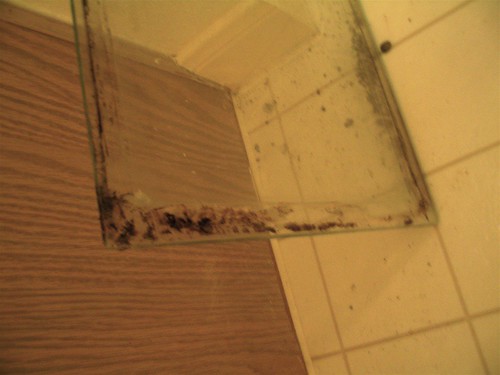Mold has its benefits. It’s an integral part of the production of antibiotics such as penicillin , and rich cheeses like Brie and Camembert. It also helps to break down organic matter in the natural world. However, mold spores that grow and spread indoors can be very dangerous. Mold can grow on many unexpected and unpleasant areas, such as on carpeting, behind walls, or on clothes. It’s expensive and difficult to get rid of it. Therefore, it’s best to prevent mold or identify it early, before it gets out of hand. Luckily, there are precautions you can take to make your home as safe from mold as possible.
Identify Problem Areas

Mold thrives on moisture. Look around you home for anything that could be a source of constant or frequent dampness. Water stains on the ceiling or walls, a basement that floods from time to time, or any persistent leaks are all indications that mold could be present now, or could grow in the future. Condensation is formed when water vapor in the air comes into contact with a cold surface such as a wall or a window, cools, and liquefies. If you spot condensation, identifying the cause is important. Left untreated, it could lead to mold and mildew as well.
If you discover any of these signs, it’s best to have a professional come to your home and conduct a thorough inspection. A mold inspector will be able to let you know if a problem does exist and, if so, what needs to be done to remediate it. Treatment could be as simple as sealing a leaky pipe, or tearing out some carpet. Left untreated, however, it could lead to way more costly problem solving.
Ventilation And Insulation
Doing laundry, taking showers, and even cooking are all things we do pretty regularly. They’re also activities that produce moisture. That dampness, without some sort of ventilation, leads to the growth of mold and mildew. Opening windows or running your HVAC system regularly, especially while doing anything that creates extra moisture, helps immensely to properly ventilate a space. A properly maintained HVAC unit regulates temperature, filters the air, and maintains a healthy level of humidity. All these factors are vital in the prevention of mold growth.
One of the most important things you can do to control mold growth in your home is to control moisture flow and intrusion. A home that isn’t properly insulated allows air and moisture so sneak in where it normally wouldn’t, resulting in increased energy bills and an increased risk of mold and mildew development.
Keep Things Dry
Possibly the most overlooked way to keep mold out of your home is to dry things immediately whenever possible. Mold can’t grow without moisture, so anything from attic leaks to carpet spills should be dried within 48 hours. In the wake of a catastrophe like a flooded room, if furniture or carpets can’t be dried completely, remove them from the house. Make sure to dry bathroom surfaces after showering. Don’t leave wet towels or clothing lying around the house or in the washer. Mold can grow and spread quickly there.
Don’t forget that dealing with mold is critical. Untreated, it can be harmful to the health of everyone in the home as well as the to the structure of the home itself.
Leave a Reply